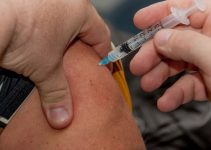Introduction
The esophagus is a muscular tube located between the mouth and the stomach. In an average adult, it is 18 to 25 cm long and about 2 cm wide. The esophagus has several layers. Cancer usually develops in the deepest layer and spreads outward. It can affect any part of the esophagus, but in most cases, it occurs in the lower third.

Esophagus. Courtesy of Olek Remesz
Esophageal cancer is three times more common in men than in women, and people of African descent seem to be at higher risk than whites. Although it accounts for only 1% of cancer cases in North America, esophageal cancer is the second most common cancer in some parts of Asia.
Causes of Esophageal cancer
As with most cancers, the exact causes of this cancer are unknown. However, there are certain risk factors that contribute to its development, including the following:
- Age – this cancer usually affects people over the age of 55
- Alcoholism
- Chewing tobacco
- Unhealthy diet
- Human papillomavirus – HPV
- Obesity
- Smoking
- Eating foods that are highly irritating foods
- Drinking very hot liquids
- Exposure to toxins, such as solvents
Some esophageal tumors are metastases from cancer that originated elsewhere in the body. For example, cancers of the larynx, pharynx, tonsils, lungs, chest, liver, kidney, prostate, testicles, bones, and skin can spread to the esophagus.
People with certain medical conditions are at higher risk for esophageal cancer. These include:
- Achalasia: People with achalasia have difficulty emptying the esophagus because their muscles cannot effectively move food from the mouth to the stomach.
- Gastroesophageal reflux disease (GERD): People who have GERD (a stomach condition in which stomach acid backs up into the esophagus) over a long period of time have a higher risk of developing esophageal cancer.
- Plummer-Vinson syndrome: People with this condition have small tissue growths that partially block the upper portion of the food pipe.
- Barrett’s esophagus: This is usually caused by acid reflux which causes the lining of the esophagus to thickens.
- Tylosis: People with this condition seem to be at higher risk of esophageal cancer.
Read Also: Combination of Immunotherapy Agents Promotes Long-Term Cancer Remission in Study
Symptoms and complications
Generally, symptoms of esophageal cancer do not appear until the tumor is quite advanced. They include:
- Chest pain that radiates to the back
- Fatigue
- Coughing (which cannot be explained by other causes, such as a cold), although this is a rare initial symptom
- Pain on swallowing
- Persistent heartburn
- Progressive difficulty swallowing, starting with solid foods
- Weight loss
Although these symptoms may indicate other conditions, it is important to see a doctor if they persist. One of the most obvious problems associated with this type of cancer is difficulty swallowing. As the tumor grows, it becomes impossible for the patient to swallow solid food, and later, only liquids can pass. After surgical removal of part of the esophagus, swallowing difficulties should improve as the esophagus heals.
The second problem that occurs is weight loss due to difficulty swallowing. Consulting a dietitian is an important step in the treatment of esophageal cancer to ensure that the individual maintains a good nutritional intake. Poor nutrition can delay healing.
Over time, the cancer may invade other organs, with the most common sites of metastasis being the lungs and liver. Complications can result from both the treatment and the cancer, especially if it has already spread.
Read Also: Recurrent Urinary Tract Infections May Lead to Bladder Cancer Study Shows
Diagnosis
If other causes have been ruled out and the physician suspects esophageal cancer, he or she will ask the person about his or her state of health, perform a physical examination and order some of the following tests:
- A barium meal: the patient swallows a barium solution, the progress of which is followed by an x-ray. This test can show if there are changes in the esophagus, stomach, and small intestine, or if there is an obstruction in these organs.
- Endoscopy: A test in which an endoscope is inserted down the throat to examine the lining of the esophagus. Your doctor will probably use a local anesthetic or give you medicine to make you comfortable. Your throat may be sore after the test, but you will be fine in a day or two. Endoscopy helps the doctor determine the type of tumor and its location in the esophagus.
- Biopsy: Using the endoscope, the doctor can remove a sample of tissue from inside the esophagus for examination under a microscope.
Once the diagnosis of cancer has been confirmed, the next step is to determine the stage of the cancer, i.e. how advanced it is. The tests used are:
- Blood tests
- Chest X-ray
- A CT scan of the chest and liver to look for tumors or other abnormalities.
- Endoscopic ultrasound to evaluate the depth of penetration of the cancer into the esophagus wall.
- Positron emission tomography (PET) scan to determine the local extent of the cancer and assess whether it has spread or metastasized.
Read Also: Acalculous Cholecystitis Latest Facts: Causes, Symptoms, Diagnosis, and Treatments
The stages of cancer are defined as follows:
- Stage 0: at first, the cancer is in the first mucosal layer.
- Stage 1: the cancer is still in its early stage and is located only in a small part of the esophagus, but has not yet spread.
- Stage 2: The cancer has spread deeper into the esophagus and may have spread to the lymph nodes adjacent to the esophagus.
- Stage 3: Cancer has spread even deeper into the lining of the esophagus or has spread to nearby tissues and lymph nodes.
- Stage 4: Cancer has spread to other parts of the body (usually the lungs or liver, although it may spread to other parts of the body).
- Recurrence: the cancer has come back after initial treatment.
Treatment and prevention
Treatment is based on the stage of the cancer or how far it has spread. As with most cancers, treatment options include surgery, chemotherapy, and radiation therapy, or a combination of all three.
Surgical treatment targets the cancerous tissue and aims to remove it. It is the most common treatment option for esophageal cancer. Before deciding on surgery, the doctor will evaluate the person’s overall health, as it can be a long and very demanding procedure.
If the esophagus is completely removed, the surgeon may create a new duct in the stomach so that food can be transported through the stomach or intestines to the rest of the gastrointestinal tract. The surgeon then chooses from a variety of methods that require incisions in the neck, chest, or abdomen.
Often, the surgeon first performs a minor surgical procedure in the abdominal cavity to make sure the cancer has not spread into that cavity. Sometimes parts of this procedure are done through an endoscope that is inserted into the abdomen (laparoscopy) or chest cavity (thoracoscopy). Both laparoscopy and thoracoscopy reduce the risk of side effects after surgery.
In exceptional cases, when the cancer is located very high up in the esophagus, near the mouth or throat, the surgery requires the removal of certain structures in the neck, such as the larynx.
The patient may have difficulty swallowing after surgery and reflux is often a problem. Initially, the patient must drink only liquids and then gradually move to soft foods. It is also possible to leave a stent (a special type of tube) in place to widen the esophagus so that food can pass more easily.
Read Also: Stomach Cancer Latest Facts: Causes, Risk Factors, Symptoms, Prognosis and Treatment
If surgery is not possible, a laser is sometimes used to remove cancer cells and clean out the esophagus. To help the esophagus heal faster after surgery, the patient receives food through tubes that go through the skin directly into the stomach. These tubes can be easily inserted during surgery or even as an outpatient procedure under local anesthesia.
Radiation therapy can be external or internal. In the first case, an external source of radiation is directed directly at the cancer cells; in the second case, a radioactive substance is placed directly into the esophagus.
Radiation therapy is associated with several side effects, the most important of which are:
- Speech changes
- Throat inflammation
- Ulceration of the mouth
- loss or change of taste and smell
- Redness, dryness of the skin
- Dry mouth
- Sensitivity of the mouth and gums
Although these reactions are usually temporary, they can be very uncomfortable during treatment. The healthcare professional can suggest measures to reduce the effects.
Chemotherapy is a treatment that uses drugs to kill cancer cells. It is usually injected directly into the veins. Because the drugs spread throughout the body, side effects, although temporary, are more severe than with radiation therapy. They include:
- An increased risk of infection
- Hair loss
- Fatigue
- Sores in the mouth
- Nausea and vomiting
- Diarrhea
Read Also: Pancreatic Cancer Latest Facts: Causes, Risk Factors, Symptoms, Prognosis and Treatment
In advanced stages of the disease or when the patient is too weak for surgery, chemotherapy is often given in combination with radiation therapy. Sometimes this combination provides comparable survival and cure rates to surgery.
Photodynamic therapy can be used to relieve symptoms of esophageal cancer. The patient takes a drug that makes the cancer cells more sensitive to light. The affected area is then exposed to a specific light source that kills the cancer cells.
After esophageal cancer treatment, it is critical to keep the esophagus open. This is done by bougienage, which is the dilation (widening) of the esophagus to make it easier to swallow. However, this is not a permanent solution and may need to be repeated regularly.
As with many cancers, the risk of esophageal cancer can be reduced by lowering your risk. This means quitting smoking, drinking in moderation, eating a healthy diet, and consulting a doctor if you have persistent throat problems. At this point, the best prevention is to be aware of the signs and symptoms and take action as soon as possible.
Our Doctor’s Opinion
It is important to remember that several risk factors for this cancer can be addressed.
Close medical monitoring is essential for people with gastroesophageal reflux disease who have been diagnosed with Barrett’s esophagus. This is the only form of screening available for this rare disease. It involves regular gastroscopic examinations of the esophagus, which include tissue sampling. Although it may seem cumbersome to undergo this type of screening, it is the best way to detect esophageal cancer at the earliest possible stage. This is the time when treatments offer the best results.
Removal of the esophagus, esophagectomy, is a major surgery that requires a long hospital stay. It can lead to complications. You should be well prepared for the procedure and motivated to actively participate in your recovery. The entire treatment team will contribute to your recovery by providing valuable care and support.
In cases where the tumor is too advanced to be removed with surgery. There are several ways to control the disease and relieve symptoms.
References
https://medlineplus.gov/esophagealcancer.html
https://www.cancer.gov/types/esophageal/hp
FEEDBACK:



